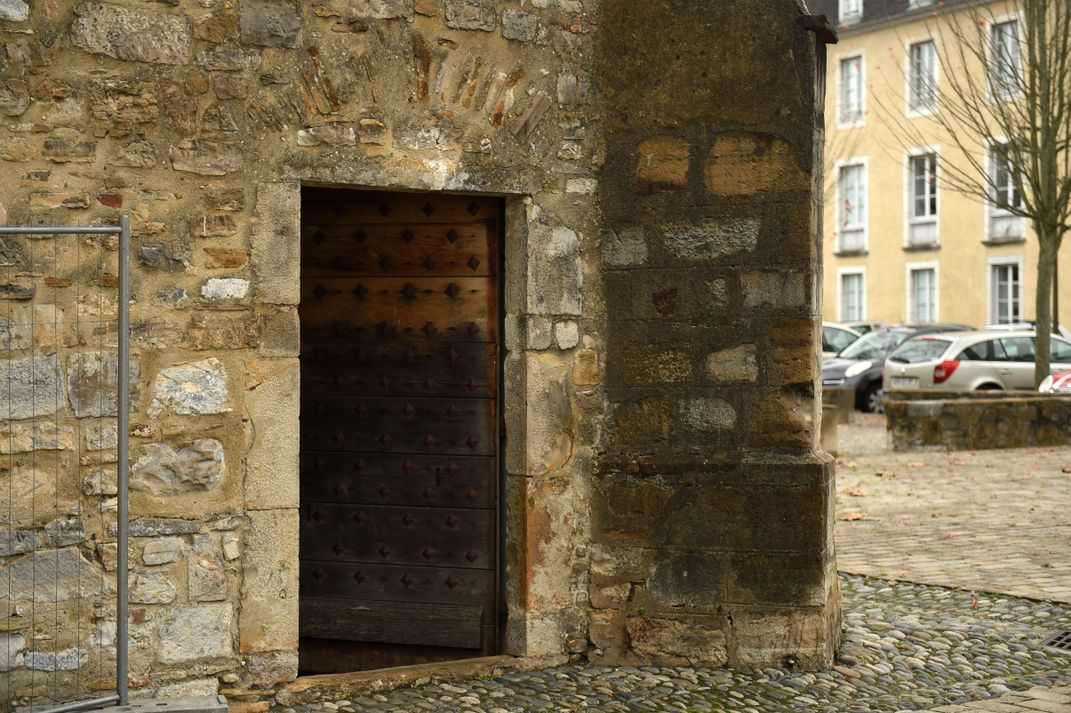Thieves Ram Into Medieval French Cathedral, Making Off With Trove of Relics
The suspects reportedly battered down the door of the Unesco World Heritage Site using a tree trunk strapped to a car
/https://tf-cmsv2-smithsonianmag-media.s3.amazonaws.com/filer/e2/f8/e2f849b3-b1cb-4d47-9a46-6f5c837ee4ca/gettyimages-1179902104.jpg)
The ancient town of Oloron-Sainte-Marie is nestled in the southwest corner of France, just north of Spain. One of the town’s prized landmarks is its 12th-century cathedral, which was once a key stopping point for pilgrims traveling to Spain’s Santiago de Compostela. (St. James the Greater, son of the biblical Salome, is believed to be buried at the religious site.)
Around 2 a.m. Monday morning, Oloron-Sainte-Marie’s famed cathedral became the target of a brazen heist. As Naomi Rea reports for artnet News, three suspects battered their way through the cathedral’s old wooden door using a tree trunk strapped to the front of a car. Local residents awakened by the noise alerted the police, but authorities did not arrive in time to stop the thieves from making off with a horde of historic treasures.
According to Agence France-Presse, stolen relics include gold chalices, crosses and ceremonial items, an 18th-century nativity scene, and priestly garments—including a 16th-century cape donated by King Francis I.
The robbers reached the church’s artifacts by sawing through a set of steel bars and smashing protective glass cases. Witnesses said the suspects then fled the scene in a second car.
“Those responsible will be found and punished,” Culture Minister Franck Riester wrote on Twitter, per a translation by AFP. “I share the emotion of France's Catholics who are legitimately shocked by this theft and the damage.”

Unesco granted World Heritage status to the Oloron-Sainte-Marie cathedral and other monasteries, hospitals, hotels and landmarks along the route to Santiago de Compostela in 1998.
“The Route of Santiago has been a meeting place for its pilgrims ever since it emerged some eleven centuries ago,” Unesco explains. “It has facilitated a constant cultural dialogue between the pilgrims and the communities through which they pass. It was also an important commercial axis and conduit for the dissemination of knowledge, supporting economic and social development along its itineraries.”
Over the course of its long history, the Oloron cathedral has sustained its fair share of damage. The house of worship was partially burned in both the 13th and 14th centuries, and when the Wars of Religion raged between France’s Protestant Huguenots and Roman Catholics in the 16th century, the church was pillaged. As AFP notes, the cathedral underwent several remodeling projects over the following centuries but wasn’t fully restored until the 19th century. Miraculously, the site’s most famous feature, a 12th-century carved Romanesque portal, survives to the present day.
Local police are studying CCTV footage in hopes of identifying the ram-raid perpetrators, and forensic investigators from the neighboring city of Pau are also on the case.
Officials have not released an estimate of the damages, instead telling local media they “do not want the thieves to know exactly what they have in their hands.”
Hervé Lucbéreilh, Oloron-Sainte-Marie’s mayor, revealed that the cost of the stolen goods is “considerable”—but also noted that the attack on the church cuts deeper than an economic loss.
“Apart from the financial consequences,” Lucbéreilh tells the Local France, “[the thieves] have robbed a part of the local heritage from the residents of Sainte-Marie.”